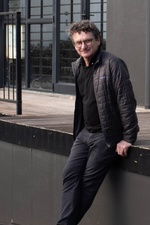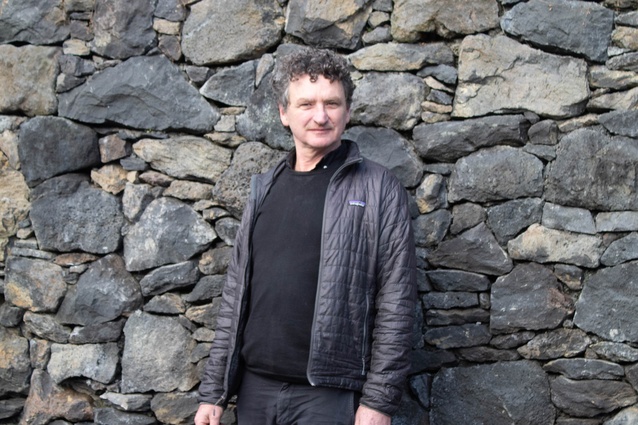The future of urban design in New Zealand – Musings from a masterplanner
Anthony Vile, Urban Design Lead at Context Architects, believes urban design in Aotearoa is at a turning point and current government policy up for consultation could point the way forward.
I was born in Auckland, grew up in the Tāmaki area and went to high school there. I always loved drawing and making stuff so architecture, as a career, was top of the list from a young age. Growing up in Auckland, I witnessed the rapid change faced by our city through a development-led boom and other challenges. It became clear to me that New Zealand had a unique opportunity for urban transformation and growth, and I wanted to be a part of that journey.
Later, architecture school opened my eyes to some alternative ways of doing things that promoted elevated outcomes and a thirst for new experiences led me to take a leap of faith and head to the United States. A three-month road trip became six. It wasn’t until 15 years later that I made a permanent move back home.
Over the course of my time ‘stateside’, I was based initially in San Francisco and then New York. I studied, travelled, worked on building sites, freelanced for various design firms and immersed myself in city life and, to some degree, my own version of the American Dream. The American approach to urban design and the vibrant culture and creativity I encountered solidified my interest in the field. I realised that urban design goes beyond architecture — it involves understanding the complex layers that make up a city and finding the balance between the scale of the city, the neighbourhood the individual buildings, the spaces between them and how the community uses them.
The influence of post-war American culture on our cities cannot be understated. The automobile-based city model, for example, originated from the American approach. After Growing up in Auckland, living in San Francisco without needing a car was a revelation for me. It showed me that vibrant, walkable, and sustainable cities were possible. Despite the political challenges, America, not unlike New Zealand, has always been a hub for creativity and innovation. New York took the West Coast experience to the next level.
American culture had far more influence on how our cities were developing than say European culture. The automobile-based city came out of the American approach, of course glamorised by Hollywood and endorsed by the GI Bill and oil and automobile companies. Within America, there were some great urban centres that were evolving despite the best efforts of the suburban scourge. San Francisco and New York to some degree existed outside of the American development paradigm of the time and I was really lucky to have those experiences.
Back in Aotearoa — post oil, post colonial — I believe that one of the biggest challenges we face in urban development is the entanglement of large-scale ‘transformational’ projects in political and economic cycles. This often slows down progress and prevents the continuity necessary for successful outcomes. To overcome this, we need a bipartisan, long-term approach that transcends political cycles. The City Rail Link is a positive example of a project that has moved beyond politics and will have a transformative impact on the city. The light rail project could do the same, but already seems to have some election-year wobbles occurring sending uncertainty to the market. We need more clarity within the design and development communities to ensure efficient and effective investment and progress is made. This is signalled in the Auckland Future Development Strategy 2023-53 (currently out for consultation) as an outcome of the Spatial Planning Act which hopefully becomes the catalyst for Big picture certainty.
This approach should extend to all aspects of urban infrastructure, including housing. Housing is not just a design issue; it is a cultural and economic issue. We need robust discussions on how to ensure housing is seen as a basic human right and need rather than a retirement investment. By depoliticising projects, we can focus on developing the best solutions for our communities.
Balancing the preservation of historical architecture with the need for modernisation and development is another challenge. In Auckland, historical architecture is already scarce due to the cultural barbarianism of the past. However, the remaining historic fabric should be respected and integrated thoughtfully into future developments. Nostalgia should not impede progress, but if a place has cultural significance, we must preserve and enhance it. Taking a place-based approach to design allows us to deeply understand the history and culture of a location, ensuring that future projects are respectful and meaningful.
We need to understand the site and, as much as possible, and as much as the project allows, engage with the community, and understand their stories to bring a richness to the project. It’s critical to success. A lot of those stories aren’t visible. If you have a historic building, that’s a visible story. But beyond that, you must look for those hidden stories, which sometimes reveal an amazing history and hopefully can become visible through the design process and, the buildings and landscape that become the place. We are really lifting the bar in this respect. There are some fantastic public spaces imbued with stories of place coming to fruition through collaboration with Mana Whenua and community.
Community engagement plays a crucial role in the design process. While private developments may have limited opportunities for community involvement, public projects provide a chance to engage with the local population and reflect their needs and aspirations. If a public project lacks appropriate engagement, it is a process failure that needs to be addressed to create a better process for the future. Learning from the past and continuously improving our methods is essential in this dynamic and ever-changing environment.
With our renewed focus on spatial planning in Aotearoa, there is a real opportunity to catch up with the rest of the world. We need to change our approach and start working with communities and developing masterplans for town centres and neighbourhoods that enable considered and agreed outcomes with regards intensification and investment. Beyond the work that Eke Panuku is doing, and some of the area plans completed at the local board level we generally continue to develop and intensify our town centres in a haphazard fashion. The only tools we currently utilise seem to be the district plan and market economics. I hope the spatial planning act might highlight the opportunity at the local level to create a process for robust masterplanning to occur. There are lots of good models from overseas that we can learn from.
We also have the responsibility of considering how we manage the decarbonisation of our cities, with regards to what we are building, where we are building, and how we move through and around cities. It is obviously critical to our future and becoming more so. How we plan our towns and cities needs to have a serious focus on climate and resilience moving forward. As we’ve seen from recent weather events, nature is a force that can wreak havoc on communities due to poor planning, and that must change.
It’s all about evolution really. We have come a long way but have a long way to go and a lot of mahi to get there. For me, environmental or spatial equity is a critical factor in how we need to evolve as a society. I see in the current environment a lot of inequity occurring with regard to the quality of housing provided, the security of tenure, access to social infrastructure, to transport options. Access to great design in my opinion should be universal.
The future of urban design in New Zealand holds immense potential. By overcoming political barriers, engaging with communities, preserving cultural heritage, and embracing technological advancements, we can create vibrant, sustainable, resilient, and inclusive cities. We can be a global leader in this space, and we must seize the opportunity by nurturing creativity, fostering collaboration, and learning from both our successes and failures. The time for transformation is now.

About Anthony Vile
Anthony is the Urban Design Lead at Context. He has more than 20 years’ experience across urban planning and design, masterplanning, multi-unit residential and mixed-use architecture, design review, public art, tactical urbanism, research, writing, teaching, and fine art.
He believes in the transformative power of good design and the potential for a design-led approach to generate positive cultural, environmental, and social outcomes, sustainable and affordable futures, and commercial and community value.










